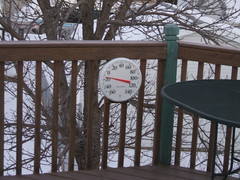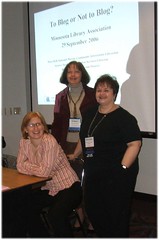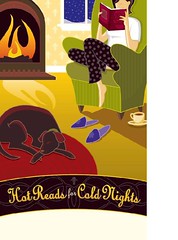Just pondering tonight how online access and social networking has changed the world. I know that’s not exactly big news. Organizational change is reality – most of us are still struggling to understand the full impact. I’ve been watching the effects of the BringMeTheNews big announcement tonight that Jerrid Sebesta (who recently left KARE11 for those not familiar with the MSP market) has joined their power news team of former station stars. While we used to stay up to watch the 10:00 TV news, it just doesn’t matter. The media industry is moving at a rapid pace to acclimate — so are most organizations. In our industry, we can’t do anything but do likewise. . . . and survive.
Category: Uncategorized
It’s really cold outside
It’s really, really cold — and windy makes it worse! When the thermometer hits -20, it’s time to take care of yourself and others. Driving to work this morning, I was thinking of how libraries could serve their communities as a warm spot — things I’ve done or seen.
- Make the door accessable, and the parking lot — including no snow banks to climb over between the parking lot and the library
- Hot drinks — coffee, spiced tea (keep it brewing for a warm welcoming aroma), hot chocolate, hot water and tea bags. How about making it free when the temperature is below 0?
- Stock up on energy assistance information and applications
- Have lots of pre-school storytimes and after-school activities. Help parents get out of the house with their kids
- Make a special invitation to people who work out in the cold to come to the library and provide them with a space to warm up, have a hot drink, or sit down to write reports. Some folks who would appreciate this could be: law enforcement, streets and road workers, meter readers, bus drivers, crossing guards . . .
- Winter reading programs are great. Libraries in our region have “Hot Reads for Cold Nights” programs. Every year has a theme. SELCO produces the promotional artwork and incentives and makes them available at low cost and has a kick-off event. Libraries run varying programs to suit their communities
- Displays:
- Cozy escapist reading
- Movies
- Recipe books-especially stews and soups
- Craft books
- Travel books about warm weather places-armchair vacation
- Gardening books-plan for spring
GeoGreeting
Via Chris Sherman at Search Engine Land:
A Google maps widget (that makes me wonder, why would someone think of this?). But cool anyway — GeoGreetings in the form of landmarks —
Ask & Google Halloween
What I did all week
What do regional libraries do? What kinds of libraries should they serve? How can we define their role and justify state funding for an institution that some librarians publicly say has outlived its usefulness? These are questions that a group of us struggled with last week as we wrote talking points to accompany the multitype library regions’ request for funding for the 2007 Minnesota Legislature. Writing talking points is particularly painful in a group that belabors the twist of every word and makes liberal use of a thesaurus to wordsmith the document. While I highly respect my colleagues and value their friendship — personally, after I have participated in the annual-writing-of-the-talking-points, I never look at them again. When I talk to local elected representatives, I talk about what I and our region accomplish with libraries to serve citizens.
As I think about what I did this week, I feel pretty good about what a region that is positioned to provide service to all types of libraries can accomplish. Here’s a week in the life of a multitype librarian:
A week ago today — I was at the media centers’ annual state conference, experiencing and planning with my colleagues in schools how we can bring back what we learned to improve student literacy.
Monday — I trained members of our regional staff how to use the State Library sponsored Minnesota Library Directory and keep it updated, so that everyone in the state has a directory to all libraries.
Tuesday – along with our cataloging librarians, I spent several hours at a small college, planning for their integration into the regional library network. Inclusion in the regional catalog will give their students greater access as well as giving the rest of the region (and the statewide network) access to the college’s unique collection.
Wednesday — My Director and I met with an enthusiastic library planning committee, which is working to start a new public library in their community.
Thursday – I assisted 3 public libraries in starting library blogs. Then I met with the representative committee that advises development and use of the integrated library system for over 80 libraries of all types.
Today/Friday – A public librarian and I met with the director of the historical society in her town, inviting them to join the library network, which will extend the environment for potential cooperation and collaboration.
Wow! It’s been a good week of service for our region – and (I hope) one well worthy of continued funding.
2006 MEMO
Minnesota Educational Media Association is meeting this week. Here is what has stood out for me in presentations I’ve attended:
Opening session featured panel of 3 Minnesota leaders in education and technology: Kit Hadley, Minneapolis Public Library Director; Scott McLeod, Director of the UCEA Center for the Advanced Study of Technology Leadership in Education at the University of Minnesota; Gopal Khanna, Chief Information Officer for the State of Minnesota.
Kit Hadley opened, quoting Joey Rogers from the Urban Libraries Council, reminding us that all libraries are part of a larger institution and libraries’ financial well-being is directly linked to that of the parent institution. She said that “Ready for K” (for instance) is an economic issue and one that will get attention for participants. She warned that proposed legislation will not be effective when it is the same issues over and over, albeit repackaged prettier and wittier.
Gopal Khanna said that information and technology literacy is a workforce issue. Historically, education has been a passing on of memorized information from generation to generation. Contemporary education needs to be based on research and learning. It is important to teach not for today’s world, but the world students will encounter in 15 years. He further challenged us with the idea that society has 2 sectors – the public and the private, which react in different ways and that the private sector has much to learn from the public sector. He said the private sector too much “loves to celebrate the problem.” Nobody comes to meetings with a solution — they are focused on talking about and agreeing on “the problem.”
Scott McCleod (presentation online) listed 4 trends that will continue: increased diversity, increased technology, globalization, and aging population. We have no idea what the workplace will be like for children, but we must prepare them for it. The folks in charge “don’t get it.” Kids find schools irrelevant. He said that technology has brought in a global environment. We need to ask what it means to write for a global environment. We ask kids to write for the teacher, but when they go home, they write for the global environment. Which is more relevant, meaningful, exciting? He quoted Seth Godin: “They say we can’t handle this much change. I say, your relevance is in jeopardy. What choice do you have?”
Constance Steinkuehler delivered The Digital Collective and Commons: Massively Multiplayer Online Games and the New Media Literacy. She spoke knowledgeably about the cultural and intellectual significance of gaming. Kids are using textbooks as cheats for their games. Exciting!
Keith Johnson spoke about using blogging in the classroom. He brought student Trevor Born, writer of the Twins blog, TwinsJunkie.com. Trevor has gained the attention of the Star Tribune and done a radio show. A great testament to the positive impact of blogging on kids who participate.
Printers**!*!+@##^
There is nothing that has given me more trouble since the dawn of technology than printers. I even have a collection of printers that defy every troubleshooting tip I’ve read. And for most of the printers I’ve given up on, I even have a few ink cartridges (some of them unopened) that don’t fit anything, but I put them away just in case. And I suspect that I’m not the only one suffering from revenge of the bubble jets.
Yesterday I visited my octogenarian mother who said rather apologetically, “can you look at my printer?” She asked apologetically, because it seems like about every other time I visit her something’s wrong with the printer. None of her other peripherals give her a moment’s problem – but the printer (actually all 3 that she’s had) periodically goes into a snit and has to be cajoled, or even re-installed, in order to perform its task of simply printing the job sent to it. Lately this printer has been displaying a great deal of terrible twos temperament, in keeping with its age. Well, after doing everything I could think of (and cleaning out the print queue list of documents the poor lady has sent to it multiple times) I managed to print out one test page, by gently tugging on the paper as it came through. The HP tech support site confirmed my fears – that the feeder-thingamabobs are worn, and the printer is fulfilling its planned obsolescence. As I promised Mom that I’ll bring her a new printer next time I come, she confessed that she has just bought new ink and could I please try to find a printer that uses the same ink (since she’s lost the receipt) – not potentially likely, I suspect.
I’ve gone through countless printers in my home office. The super-deluxe Epson printer-scanner-FAX-no-it-doesn’t-make-coffee on my desk, bought to save space, lost its ability to receive a print job mid-way through its first year. After hours of going through the phone support maze tech-support-guy-half-way-around-the-world and I decided the only thing to do was package it up and mail if off – not likely, or even prudent. So, I made my way to Best Buy on the corner and bought a cheap Canon-which-does-just-fine to use until some miracle lightning bolt might make the scanner-FAX-but-doesn’t-print wake up. Hasn’t happened, and now I have 2 devices where there used to be one which replaced 3.
While I was grousing about this recently to millennial niece, she said to me straight-faced, “Did you try shaking it?” Seems that when she had a problem with her printer, and called the manufacturer tech support, they told her to unplug it, hold it upside down, and shake it —- and it worked! Go figure, but no, it didn’t work for me.
MLA-blogging on the last day
Who cares about blogging on the last day of a conference at 8:30 a.m.? Well, apparently more than a few dedicated librarians. Good on them!
When I saw that our session “To Blog or Not to Blog” was scheduled for that dubious time-slot, I was not encouraged. Then, when I saw that we were in the same time slot as not only “Thinking Big: the State of the State Library” by Minnesota State Librarian Suzanne Miller but also “Cool Story Programs for Kids” by the legendary children’s programming guru Rob Reid, I was sure that I and my colleagues Aurora and Mary Beth would be talking to each other. How wrong I was!
Approximately 40 people attended our session and what fun we had! AJ, MB, and I get really pumped when we have an engaged audience, and this one was one of the best. We started with what is a blog, demoed how some libraries are using blogs to build community, and then brought up a real live audience member who set up her very first blog (thanks, Kathy!) I tell ya, reality TV has nothing on us.
I am really encouraged that so many people are open to using social software. There were many good questions and lots of head nodding. 2 years ago a team from our organization did a program at MLA on electronic communication and the part about blogging was by far the most popular. Now, this year again it’s been a real upper to bring something that I hope will enhance Minnesota library service through community building.
Sarah Long at MLA
When Sarah was president of ALA from 1999-2000, her theme was “Libraries Build Community.” She has worked in every type of library from starting out as a school librarian, to working in the Ohio State Library, to a stint as an academic librarian, to several public libraries and library systems. She is also a past president of the Public Library Association.
- Sarah challenged us that it is no longer enough to keep the book — something has to be “going on”.
- Talked about the difference between marketing and PR. She says marketing is research, what you do before. PR is telling the story.
- She said (1) get rid of the old stuff; (2) build on your assets; (3) try some new stuff (don’t be afraid of failure)
- Her take on the future of libraries (my question): get more IT and marketing staff. Library has got to change. “Will we change fast enough?”
- We have a “fearsome” future – both fearful, but also wonderful. Left us with “this is the best time”
Podcasting
So very glad I attended this 11:15 MLA session on podcasting presented by Cody Hanson. Cody is an MLIS student at St. Kate’s/Dominican and works at the Carlson School of Management.
Kept his audience involved throughout the presentation. Gave the best explanation of RSS I’ve seen. Very knowledgeable about all things 2.0. He got a real chuckle out of the audience when he showed a MARC record and said if we understood that, we should have no trouble understanding XML, which is the basis for RSS. Very capably explained how to make a podcast and related his experiences with podcasting.



